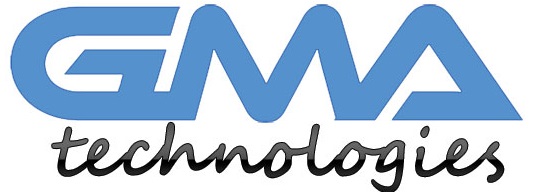**Unlocking the Price Tag: The Hidden Cost of Website Design and Development **In today’s digital landscape, a striking website is more than just an online presence; it’s your brand’s virtual storefront. But as you embark on the journey to create this essential asset, you might be taken aback by the price tags attached to web design and development services. What drives these costs beyond the surface? Is it just about aesthetics, or are there deeper factors at play? In this blog post, we’ll peel back the layers of pricing intricacies in website design and development. From overlooked technical requirements to ongoing maintenance expenses, we’ll illuminate the hidden costs that can impact your budget significantly. Whether you’re a startup on a shoestring budget or an established business ready for a revamp, understanding these factors will empower you to make informed decisions that won’t break the bank—or compromise your vision. Let’s dive into what really influences website prices so you can build not only aesthetically pleasing but also financially savvy solutions!
Introduction: Setting the stage for the importance of understanding cost of website design and development .
When it comes to building a website, many people focus solely on the initial price tag. However, what’s often overlooked are the hidden costs that can significantly impact your budget. Understanding these costs is crucial for anyone looking to establish an online presence. Whether you’re launching a blog, portfolio, or e-commerce store, knowing the essential factors that influence website design and development prices can save you from unexpected expenses down the line.
Navigating through this complex landscape requires insight into various elements like website type, complexity, design choices, and ongoing maintenance needs. By grasping these aspects now, you’ll be better prepared for what lies ahead in your digital journey. Let’s dive deeper into how each factor plays a pivotal role in shaping your website’s overall cost.
The Different Types of Websites: Discussing how the type of website greatly impacts the cost of web design and web development.
When considering website design and development costs, the type of website is a fundamental factor. Different websites serve varying purposes, which directly influences their pricing structure.
A simple portfolio or blog often comes with lower expenses. These sites usually require minimal features and straightforward designs. However, more complex options like e-commerce platforms demand extensive functionality and security measures—driving up costs significantly.
Corporate websites may also vary in price depending on branding needs and interactive elements. Custom-built applications can inflate budgets even further due to specialized coding requirements.
Non-profit organizations might need unique layouts to effectively convey their mission but typically work within budget constraints. Each type of website presents its own set of challenges that must be navigated during the design process, underscoring the importance of understanding these distinctions when budgeting for your project.
Complexity and Functionality:
When it comes to website design and development, complexity is a significant factor influencing costs. A simple portfolio site for a photographer will be far less expensive than a feature-rich online marketplace.
Functionality plays an essential role too. The more features you want—like user registration, payment processing, or interactive elements—the higher the price tag will climb. Each functionality requires additional mahjong ways.
Moreover, custom-built solutions add another layer of expense. Off-the-shelf templates are often cheaper but may not provide the unique experience your brand needs.
Consider how users will interact with your site. Ensuring smooth navigation and fast load times can translate into greater investment upfront but pays off in customer satisfaction later on. Balancing these complexities against budget constraints is crucial for any project’s success.
Design Elements:
Design elements play a crucial role in shaping the user experience and overall appeal of a website. From color schemes to typography, every choice carries weight.
Custom graphics can significantly increase costs. Unique illustrations or logos require skilled designers who charge for their time and expertise. Stock images may be cheaper but often lack that personal touch.
Responsive design is another factor. Ensuring your site looks great on all devices demands extra work—potentially pushing up prices as developers optimize layouts for different screens.
Animations and interactive features add flair but come with a price tag. These elements enhance engagement, yet they need careful planning and technical know-how to implement effectively.
Lastly, accessibility features must not be overlooked. Designing a site that caters to users with disabilities involves additional considerations that can also impact budget allocations.
Content Management System (CMS):
The choice of a Content Management System (CMS) plays a pivotal role in determining website costs. Different CMS platforms come with varying pricing structures, features, and levels of complexity.
For instance, open-source options like WordPress or Joomla are often cost-effective. They allow for flexibility and customization without hefty licensing fees. However, this can require skilled developers to maximize their potential.
On the other hand, proprietary systems may offer more robust support but often have higher initial costs and ongoing expenses tied to subscriptions.
Additionally, the ease of use varies between CMSs. A user-friendly interface might save money on training staff or content creators who manage site updates regularly.
Choosing the right CMS isn’t just about upfront costs; it’s about long-term viability too. Make sure your selection aligns with both current needs and future growth plans.
Additional Features:
When it comes to website costs, additional features can significantly impact the budget. E-commerce functionality is a prime example. Building an online store requires payment gateways, inventory management systems, and secure checkout processes—all of which increase development complexity.
Custom coding also adds to the financial equation. While templates are available for many platforms, tailored solutions provide unique functionalities that align with specific business needs. This bespoke approach often demands skilled developers and longer timelines.
SEO integration is another crucial consideration. Implementing effective SEO strategies during the design phase ensures higher search visibility but may necessitate advanced tools or expert consultation, driving up initial expenses.
Every feature you add enhances user experience but comes at a cost. Understanding these factors allows businesses to budget accordingly while ensuring their website meets operational requirements and customer expectations.
Maintenance and Updates:
Maintenance and updates play a critical role in the total cost of Cost of Website Design & Development. Once your website is live, it requires regular attention to keep it running smoothly. This includes software updates, security patches, and performance monitoring.
Consider that websites are not static; they need to adapt to user needs and evolving technology. Regularly updating content ensures that your site remains relevant and engaging for visitors. Search engines also favor fresh content, which can impact your SEO rankings.
Additionally, if you have an e-commerce platform or any custom functionality, ongoing maintenance becomes even more important. Bugs or downtime can lead to lost sales opportunities. Therefore, budgeting for these costs should be part of your overall financial planning.
Some businesses opt for monthly retainers with web developers or agencies for consistent support. Others may choose a DIY approach but risk falling behind on essential tasks due to time constraints.
Understanding these hidden costs will help you make informed decisions during the design and development process while ensuring you’re prepared for what lies ahead with your online presence. The essential factors that influence website design and development costs extend far beyond initial creation—they shape the long-term success of your digital strategy as well.

